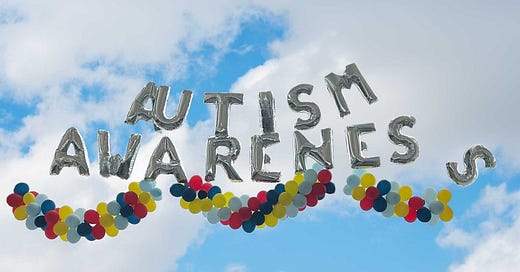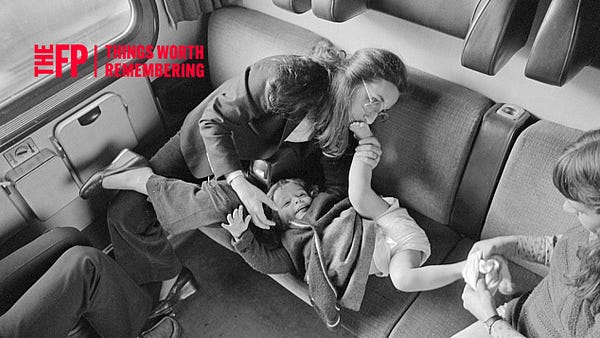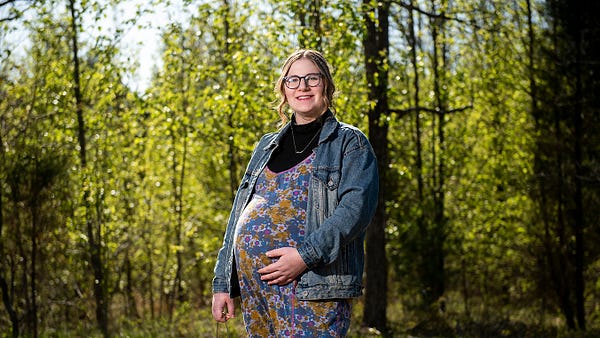
The Free Press

Mark your calendars, because July is Fibroid Awareness Month. Maybe you already celebrated National Fibroid Awareness Week—yes, there is both a month and a week—which starts in mid-April and, little-known fact, overlaps with National Infertility Awareness Week. In April, we’re also meant to have awareness for foot health, stress, irritable bowel syndrome, congenital diaphragmatic hernias, STIs, Parkinson’s, limb loss, and frogs.
It’s easy to dismiss these holidays as marketing ploys, or the purview of bloated HR departments in search of new excuses to send emails. But look closely and you’ll notice that the mission of Raising Awareness, along with its cousin, Ending Stigma—we often Raise Awareness to End Stigma—has carved into our popular culture a huge place for itself.
Still, there are a lot of emails.
A search of my inbox surfaces calls to raise awareness for mental health (which gets its own month, May), veterans’ experiences, guns, epilepsy, and antisemitism.
To raise awareness for domestic violence, a building in downtown Pittsburgh was lit with purple lights. A bakery I like encouraged me to buy pink macarons for breast cancer awareness. I was walking up the terminal in Newark airport early in the morning recently when I walked past a gate that had been festooned with Mylar balloons spelling out “Autism Awareness.” It was 6 a.m. The gate was empty. Travelers, autistic and not, had presumably shoved off to their destination.
“Tourette awareness” is something I’ve learned about thanks to Baylen Dupree, a TikToker I follow along with 9 million other people, who posts videos of her involuntary tics. I’m not picking on Dupree: she’s just one voice in a massive chorus of chronic illness sufferers who display their symptoms—this part is often referred to as a “journey”—to the world on social media. The goal—say it with me now—is to raise awareness for their conditions.
Awareness is a big tent. Under awareness goes anything wacky, intimate, perverse, or otherwise eye-catching that allows you to accrue followers who you can then sell things to. A running influencer who spreads awareness about chronic illness, specifically Epstein-Barr, swears by Better Nature Tempeh. Brittney Mahomes hawks Auvi-Q, an EpiPen approved for toddlers, while raising awareness about food allergies. “Disabled Eliza” uses a duster made by Flash.
It’s not a coincidence that the most shocking conditions get the most eyeballs. Perhaps we tell ourselves it’s “consciousness-raising” or “bringing visibility to an issue” or “using our influence,” but let’s be real: it’s voyeurism with a built-in pardon. Being authentic, finding community, and ending stigmas are, on the surface, good things. The internet is for everyone—no one should be judged, much less punished for, things they can’t control, whether it’s a rare blood disorder or a deformity or a disability. People can and do share whatever they want online, but it’s worth noting when authenticity demands intimate details for twisted incentives.
I am not proud to report that I was recently served up a video on Instagram Reels of a cute girl named Hannah. Hannah is an 8-year-old who suffers from a new-ish eating disorder—it was introduced to the DSM in 2013—called ARFID, or avoidant/restrictive food intake disorder. She is a clinically picky eater whose “safe foods” include Goldfish crackers and string cheese and whose “fear foods” include guacamole, spaghetti, applesauce, and cucumbers. The video showed Hannah trying mashed potatoes for the first time. She said the bowl of food made her “uneasy” before spooning three incredibly tiny bites into her mouth, which made her gag and nearly cry.
A YouTube video explaining Hannah’s journey to a diagnosis—which includes her mother sharing her height and weight—is festooned with hashtags including #arfidawareness, #eatingdisorderawareness, #autismawareness, #mentalhealthawareness, and, at the end, simply #awareness.
I watched a few more short videos—she tried a plum, orange Jell-O—before I stopped myself: Why in the world am I watching a child that I don’t know struggle through eating a honeydew? Why is anyone watching this?
The comments included notes from cheering teens, nosy moms, judgy nutritionists, and perverted men. There are hundreds of comments. Hannah isn’t a niche internet oddity. She has 1.4 million followers. She went on Good Morning America, where she told the host, “Whenever I try food, I think about all the people that I’m helping.” She added, “It motivates me.” But becoming well should be its own reward, something judged by parents and doctors and therapists.
ARFID is not well known, so until the proper research can be done and more resources cultivated, the segment laments, “Hannah is doing what she can: raising awareness.”
Awareness hasn’t always been an excuse to gawk, or an eternally open-ended project.
Growing up, I remember running 5Ks on Sundays for the Susan G. Komen Race for the Cure. There were pale pink wreaths of balloons and pink bagels and many, many ribbons. There was always a woman flanked by other women on a platform announcing that some massive amount of money had been raised to put toward breast cancer research, resources, and earlier detection. They gave out pamphlets for how to self-screen for lumps. I still do examinations in the shower because of it.
But somewhere along the way, that kind of real-world awareness got surreal.
Awareness these days doesn’t ask for much. It also doesn’t offer much. It invites you to be on your phone and just let the awareness wash over you. There used to be an ask, usually money, tied to awareness, but lately we’ve let things get loose and let awareness drift away from any end. Finding a cure for autism, diagnoses for which are booming, has become passé. The new drugs to combat obesity weren’t the result of awareness, but discovery. It’s unclear how being aware of endometriosis or limb loss or Tourette is going to help any of those people, or ourselves. We’ve let people run roughshod over our consciousness in the name of awareness.
It’s worth asking: What are we not raising awareness for? Maybe it’s the influence of Big Pharma on our increasingly sick lives and of Big Tech on our increasingly corrupted ways of dealing with it.
I hope fibroids and frogs and IBS get proper research funding. I hope Hannah—the little girl searching for more foods to add to her safe list—gets better. But I wonder if she is destined to join the fight for children’s internet privacy, or if one day she’ll be declared cured and allowed to retire the Instagram page and fade away into normalcy, or if she’ll keep on trying to find new safe foods, in front of her followers, forever.
Suzy Weiss is a reporter at The Free Press. Read her piece, “Hurkle-Durkle Is the New Way to Self-Care Ourselves to Death,” and follow her on X @SnoozyWeiss.
To support The Free Press, become a subscriber today:















Online voyeurism never goes out of style here in America, life is a reality show.
Brilliant 👏